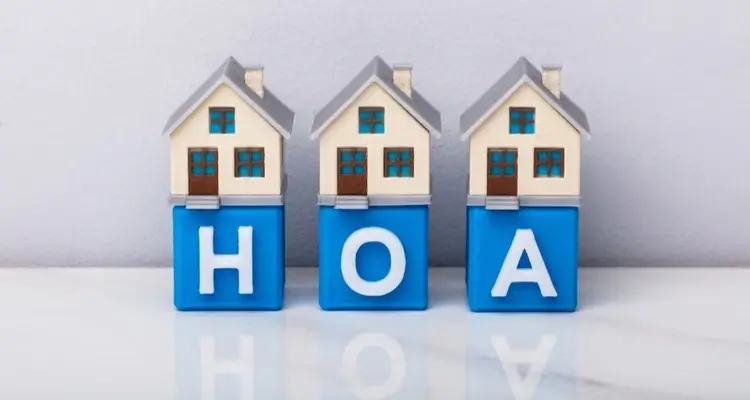
What is the APR?
The annual percentage rate (APR) is the interest charged annually on loans and lines of credit. The APR rate is higher than the interest rate because it takes all additional costs and fees into account to give you the true interest rate. The annual percentage rate is found on mortgage loans, auto loans, personal loans, and credit cards.
In 1968, the U.S. Congress passed the Truth in Lending Act (TILA). Now lenders are required to fully disclose the applicable interest rate they will charge a borrower who borrows money from them. The interest rate must be expressed as an “Annual Percentage Rate” or APR.
In the sections below, the discussion will focus on defining APR, followed by a discussion on how APR is calculated.
How to Calculate APR
There should never be a situation where you need to actually calculate the applicable APR on borrowings. You can usually find the rate information without much effort. However, you do have a right to know how lenders are calculating their advertised APRs.
You can quickly calculate the APR in five steps.
Add total interest paid over the duration of the loan to any additional fees. |
Divide by the amount of the loan. |
Divide by the total number of days in the loan term. |
Multiply by 365 to find the annual rate. |
Multiply by 100 to convert the annual rate into a percentage. |
When determining APR, keep these things in mind:
- Loan amount
- Interest rate
- Additional fees
- Duration of loan
The calculation usually starts with a baseline interest rate as set forth by the Federal Reserve or other financial regulatory agencies. The lender’s margin is then added to the baseline rate to get the APR.
For the purposes of this discussion, we’ll use the “U.S. Prime Rate” as the baseline rate. The U.S. Prime Rate is the rate banks typically charge commercial borrowers. It’s calculated by adding 3% to the Fed Funds Rate, which is the rate the Federal Reserve charges banks on their nightly deposit balances.
Today, the U.S. Prime rate sits at approximately 3.25%
Using that as the baseline rate, lenders would then add what they refer to as their margin. If a credit card company wants a margin of 12%, they would add that to the baseline rate of 3.25% to get an APR of 15.25%. That’s the rate a borrower could expect to pay on borrowings. Note: Lenders might adjust their expected margin up or down based on customer risk assessment factors.
Using the APR to Compare Multiple Loan Offers
Comparing loan offers from different lenders can be tricky because you can’t just look at the interest rate to determine the true loan cost.
Fortunately, you can quickly and easily see which loan offer is the cheapest using the APR rate.
In this example, we will compare two mortgage loans for $250,000.
Loan 1
- Loan amount: $250,000
- Interest rate: 4.0%
- Closing costs: $10,000
Loan 2
- Loan amount: $250,000
- Interest rate: 4.3%
- Closing costs: $4,000
Using our loan comparison calculator we see that loan 1 has the lower APR and will save you almost $10,000 over the course of the loan.
What Does APR Mean?
When you see an advertisement for a new credit card or lending offer, you will note the lender is going to disclose the applicable APR. They disclose this information in accordance with the aforementioned TILA. Failure to properly disclose this information could result in penalties and fines.
For people who are not financially astute, the term APR could be a little confusing. By definition, APR is the annual interest rate the lender intends on charging to a borrower who avails themselves of the lender’s offer.
The intent of disclosing the APR is twofold. First, it lets the borrower know how much interest they will be charged over an entire year on the amount they borrow. That would assume the borrower never makes a principal payment. Obviously, the actual amount a borrower would pay in interest would be less if they also pay down principal amounts.
The other thing the APR does is give consumers a basis for comparison between lenders. If one credit card company’s APR is lower than the others, that would be the card a consumer would likely prefer if all other services are equal.
It’s worth noting that lenders will typically change the beginning APR on a credit card or loan over the first 12 months. After that, they have more freedom to adjust the APR up or down based on market conditions.
APR vs. Interest Rate
The interest rate and APR are related but are not the same. The interest rate is the amount of interest charged annually. The annual percentage rate takes into account the interest rate, loan amount, closing costs and other upfront fees, and duration to give you the true cost of a loan.
Types of APR
While the APR concept might seem a bit confusing, there’s more to it. Credit card companies often maintain as many as four different APRs, which they apply separately under certain circumstances. For clarity, here are the four types of APR you might encounter:
- Purchases APR
- Cash Advance APR
- Penalty APR
- Introductory APR
Purchases APR
This is the APR that the credit card company charges on a consumer’s total purchases minus payments. If a consumer decides to pay down the balance of their entire purchase during the month, they will not be charged interest.
Cash Advance APR
This is the APR that the credit card company charges on cash advances. The cash advances could include credit card checks issued or cash advances taken from ATM machines. The Cash Advance APR tends to be higher than the Purchases APR.
Penalty APR
Should a consumer default on the terms of their borrowing agreement, the credit card company could charge a higher APR on certain balances. They refer to this as the Penalty APR.
Introductory APR
The credit card industry is quite competitive. As a means of competing, credit card companies will offer introductory APRs. This type of APR can be as low as zero percent and applicable for as long as 18 months. The primary intent of an introductory APR is to entice consumers to transfer balances from other cards with the promise their low APR will remain in place until the introductory period has concluded.
As a prudent consumer, you should always focus on borrowing at the lowest rates possible. With a clearer understanding of the APR concept, you are now equipped to make better borrowing decisions.



